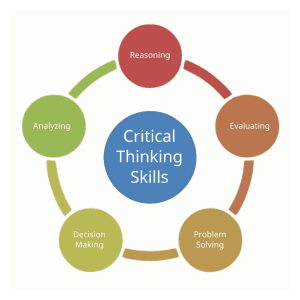 Teens are averaging almost 5 hours a day on social media and they often have trouble identifying mis- and disinformation. In this media saturated world, what are some resources that can help students become more mindful consumers, and creators, of information? How to teach media literacy is a question on the minds of many educators.
Teens are averaging almost 5 hours a day on social media and they often have trouble identifying mis- and disinformation. In this media saturated world, what are some resources that can help students become more mindful consumers, and creators, of information? How to teach media literacy is a question on the minds of many educators.
Building good media habits, developing critical thinking skills, and recognizing bias can help students thoughtfully analyze, engage with, and create media. This blog will explore these media literacy strategies and share resources for teaching media literacy in your classroom.
How to Improve Media Literacy
1. Build Good Media Literacy Habits
Encourage students to get information from diverse and credible sources. Credible media sources should be trustworthy, have accurate information, and be impartial. The “Is it Legit?” poster by The News Literacy Project is a helpful tool for students trying to identify legitimate sources. The poster lays out five detailed steps for determining credibility including looking for ethical guidelines and standards, and examining how errors are handled. Also, stay tuned for our next blog, where we’ll dive deeper into finding trustworthy news sources.
With over half of teens aged 14-18 consuming news on social media, teaching students to participate responsibly online is increasingly important. Digital citizenship explores: the importance of pausing and thinking before sharing content on social media, a creator’s rights and responsibilities, how to identify fake news, why clickbait can increase the reach of disinformation, and more. Check out Common Sense Education for K-12 lessons that focus on media literacy and digital citizenship.
2. Develop Critical Thinking Skills
Critical thinking skills are essential for media literacy. Participating in thoughtful conversations about media with your students can encourage a deeper level of understanding and empathy. A natural place to start is by discussing current events that are tied to your content.

When discussing media messages, have students answer questions like:
- Who is the author and what is the purpose of this message?
- What techniques are used to grab attention (e.g. tone, images, or appeals to emotion)?
- What perspectives or information might be missing?
Teach students to read laterally or open up another tab to cross check information from the original source online. While reading laterally, students can evaluate the source and its authors and determine if other credible outlets corroborate the information shared. Check out iCivics for some lesson plans and resources to help students practice their lateral reading skills.
Here is a comprehensive list of questions from NAMLE (National Association of Media Literacy in Education) that students can use when reading laterally to interpret the media messages they encounter.
3. Understand and Recognize Bias
 Teach students to recognize bias, a preference or prejudice in media messages, and its potential impacts. It is important to acknowledge that everyone has a set of biases (implicit and confirmation) which may affect how they interpret media messages. Facing History and Ourselves has a lesson that dives into how confirmation and other biases influence the understanding of media messages and what to do to combat them.
Teach students to recognize bias, a preference or prejudice in media messages, and its potential impacts. It is important to acknowledge that everyone has a set of biases (implicit and confirmation) which may affect how they interpret media messages. Facing History and Ourselves has a lesson that dives into how confirmation and other biases influence the understanding of media messages and what to do to combat them.
The creators of media messages also have biases which influence what they produce. Checkology, from the News Literacy Project has a lesson on Understanding Bias, that introduces students to five types of bias (partisan, demographic, corporate, “big story,” and neutrality) that they may encounter in the media. In the lesson, students reflect on how those biases have the potential to sway a reader’s perception of news and the responsibility of journalists and media creators.
Bias in the news and media isn’t new, and the Newseum has a collection of resources where students analyze historical artifacts for bias. Looking for a content specific lesson on identifying bias? Check out PopEd’s lesson, Fracked or Fiction where students analyze and evaluate informational sources for potential bias and use valid reasoning to write an argument that is for or against fracking.
National Media Literacy Organizations
For more resources on teaching media literacy skills explore resources from Newsela, PBS Learning Media, and the resource library from News Media Literacy Now.
Image credits: Child holding phone (Photo by Alex P); Critical thinking skills (Zenhaus, CC BY-SA 4.0, via Wikimedia Commons); Media Bias (Media Bias/Fact Check, Public domain, via Wikimedia Commons)


